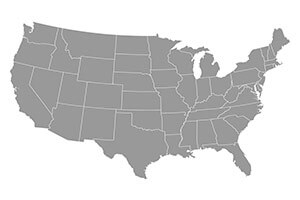U.S. Honey Crops and Markets
U.S. Honey Crops and Markets – November 2016

UNITED STATES
Beekeepers were finishing their fall bee work as this was written. Most beekeepers were treating for varroa mites with the approved mite treatments, including the more recently approved oxalic acid. In some cases beekeepers are finding larger mite populations than normal, but on the bright side, they had not seen as much parasitic mite syndrome. Colonies were generally going into winter with good populations, but some were very short on stores and are being fed or will need feed. Reporters in some states told us that their colonies set idle during a very hot, humid August and September before fall flows started. In some cases bees had no flowers to forage on, but their populations had continued to increase.
Tentative estimates put the U.S. honey crop above last year’s disappointing yields. Better honey crops in the Dakotas will help. In addition, parts of the Southeast, including Florida, also had better honey crops than last year’s very disappointing yields. Dry weather continues to be a limiting factor for better honey crops over many of the Intermountain and Western states, however.
Beekeepers continue to indicate a fairly strong retail honey market, but wholesale trading has slowed from previous years, especially for larger lots of honey facing increasing competition from foreign honey.
NORTHEAST
Locations that had adequate moisture were reporting good fall flows from goldenrod, aster, knotweed, loosestrife and smartweed. Earlier in the season, some New York beekeepers said that their bees had made a super or two of honey from uncut alfalfa due to the drought affecting parts of that state. On the other hand, some other dry parts of this area had not received any significant honey flows since spring and beekeepers were feeding in addition to treating for varroa mites. The weather continued to be hot and humid throughout much of September. Late season problems with wax moths and small hive beetles in weak or queenless colonies have been mentioned by some of our reporters. At this late time in the season most beekeepers are uniting weaker colonies so that they can be overwintered successfully. In other cases, remaining bees are being shaken from weak colonies and the equipment is being stored for restocking next spring.
Beekeepers are having little trouble selling their new crop honey at the retail level, but some of the commercial honey producers indicate reduced offering prices from the larger packers.
MIDEAST
A summer dearth after a fairly good spring honey flow idled colonies and caused them to eat above normal stores. The summer was hot, humid with many days registering into the 90s until fall began. Unfortunately, varroa mites and small hive beetles have not be idle, causing some beekeepers extra work to clean up wax moth-infested deadouts or hive beetle-slimed hives. Many beekeepers began feeding at the same time they started treating for mites. They are fearful of increased starvation this winter due to a lack of stores. Reporters mentioned minor flows from goldenrod, aster, smartweed, and assorted fall flowers where moisture has been sufficient.
Honey flow reports have been mixed. Beekeepers were busy extracting the last of their supers and were packing honey for fall festivals and the holiday season. Local retail sales remain strong. Quite a bit of small-lot wholesale trading is also taking place, but few beekeepers sell to the major honey packers since local demand is so good.
SOUTHEAST
Beekeepers in Florida said that the Brazilian pepper flow was just beginning in mid to late September. This is normally the last major honey flow of the season. Additional honey plants blooming over much of the Southeast included goldenrod, aster, Spanish needles and assorted fall wildflowers, but these flows normally only provide winter stores for the bees. Honey crops for the season were generally somewhat better in the Southeast than last year’s disappointing yields. Some beekeepers continue to feed colonies, while at the same time they are treating for varroa mites and trying to keep small hive beetle infestations low. Early fall weather continued to be rather hot and muggy with periods of heavy rainfall in some locations.
The wholesale honey market for larger lots of honey remains rather weak, with reduced offering prices. On the other hand, beekeepers were more optimistic about small-lot wholesale and local retail sales.
SOUTHWEST
Coming into the fall and winter seasons, beekeepers are wrapping up colony work which included treating for mites and feeding colonies short on stores. Some beekeepers are also still coping with large small hive beetle populations in their locations. Beekeepers have been uniting weak colonies and are trying to make sure all colonies go into winter queenright. Honey crops were quite variable this season with estimates ranging from a low of 50% to a high of 120% of normal. Much depended on the strength of colonies coming into honey flows, as well as the availability of moisture at the right time for plant growth. Reporters in Arizona, New Mexico and west Texas said that they received some good late summer and early fall rains, but at times flooding was a concern. Bees continue to work blooming desert flowers as well as irrigated cotton and alfalfa.
Most honey extracting has been completed and beekeepers are now concentrating on local retail sales as the holidays approach. Demand for local honey remains strong, but large lots of honey continue to face still competition from cheaper imported honey.
EAST CENTRAL
Spring honey flows were generally better than later in the season in Illinois, Indiana and parts of Ohio. In the northern half of Michigan beekeepers were also pleased with their honey crops that were helped by adequate moisture and then clear, warm weather during the clover, alfalfa and wildflower flows. Quite a few Wisconsin beekeepers complained about frequent later rains which delayed or interrupted their clover, alfalfa and basswood honey flows. One helpful fact cited by…


